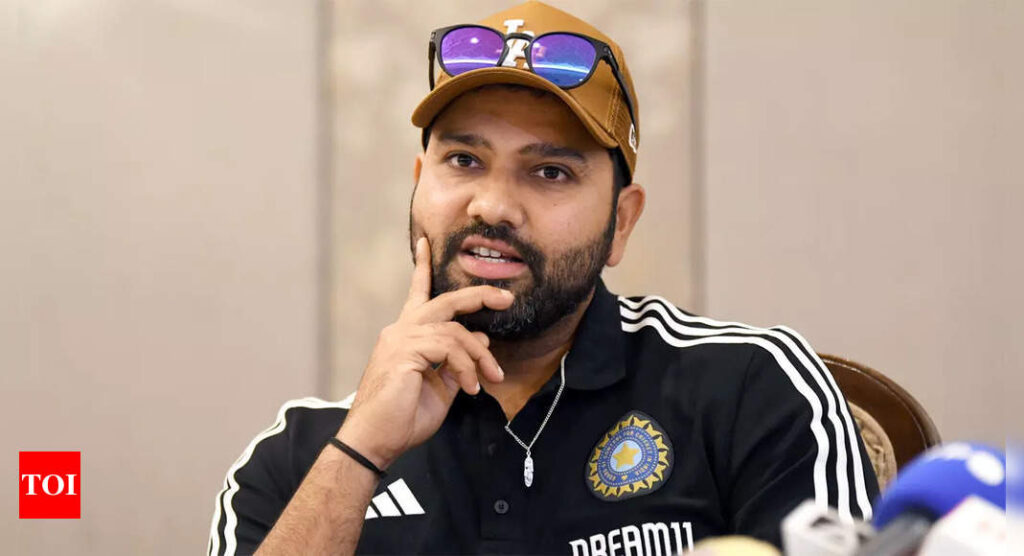[ad_1]
At the end of the 2019 World Cup, Rohit had scored 27 hundreds but in the last four years he could add only three more centuries to his tally. The captain largely believes that this is because of the high-risk game he has adopted.”I wanted to take more risks, which is why my numbers are slightly different now,” Rohit told PTI during an exclusive interview.
“My (ODI) strike-rate (during this period) has increased but the average has dipped a bit. This is exactly what our batting coach (Vikram Rathour) was telling me, ‘You have scored big runs because of the way you batted all these years and in the last few years, it (big runs) has not happened because you are taking risk,” the skipper added.
Rohit is the only player to have scored three double hundreds — 209 (vs Australia, 2013), 264 (vs Sri Lanka, 2014) and 208* (vs Sri Lanka, 2017).

His last 150-plus knock came in 2019 against the West Indies in Vizag.
Rohit said that he had to compromise somewhere down the line.
“My career strike-rate is around 90 (89.97) but in the past couple of years, if you look at my scores and take the strike-rate into consideration, it has been around 105-110. So somewhere you had to compromise. It is not possible to have a 55 average and a 110 strike-rate.”
This high-risk game is also a process of his self-discovery, said Rohit.
“It was purely my choice. My usual batting is still my patent, but I wanted to try something else. I am very happy with the result.”

In fact, he had communicated his change of approach to the team management.
“Everyone wants to bat long and score those 150s and 170s. I still want to do that, but it is always nice to do something that you have not done. It only adds up in your list of batting abilities. Unless you do it, you won’t know it.
“I know if I play high risk shots, I will get out few times but I didn’t bother. This was communicated by me to the management that this is how I want to play.”
An extension of that was the kind of tracks that India team has played Test matches on at home. They weren’t exactly batting-friendly, and the Indian skipper has been the team’s most consistent Test batter of late.
“Look at my recent Test innings in India. I can tell you that batting in India is much more difficult now than batting overseas, especially in the last 2-3 years.

“The pitches that we have played on, it is more challenging than overseas. That’s why we haven’t spoken about runs and averages of batting unit. All of us agreed that we want to play on challenging pitches. I don’t want to worry about what kind of averages we finish with.
“That is how I think but different players will have different thought processes, and I don’t want to change that. I am going to play on pitches that suit our bowlers,” he declared.
Do captains have a shelf life?
He has captained Mumbai Indians for 11 years and is leading the national team for nearly two years now.
So do captains have shelf life?
“There is no such thing as shelf life,” he replied with conviction.
“You get a responsibility, you produce a result and more important is if you are happy with the responsibility that you have been entrusted with. This is more important questions than the shelf life.”
He is a planner but also likes to trust his gut instinct.
“I am a person who goes with the flow. What I feel right now, I would want to do without thinking about what I want to do five or six months later. I like to take things as they come but prepare according to what is in store in the future.”
[ad_2]
Source link










More Stories
Australia exposed India’s little chinks in World Cup final: Sanjay Manjrekar | Cricket News
Rahul Dravid, BCCI engage in discussion but board inclined towards new coach | Cricket News
IPL 2024: Delhi Capitals retain Prithvi Shaw | Cricket News